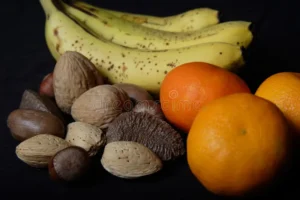As the cricketing world gathers for yet another thrilling World Cup match, a perplexing trend has emerged on the field – an increasing number of cricketers grappling with cramps. Beyond mere discomfort, these cramps can impact a player’s performance and even alter the course of a match. In this in-depth analysis, we delve into the intricacies of cramps, exploring the physiological mechanisms, environmental factors, and lifestyle choices contributing to this phenomenon.
Cramps

Cramps, in the context of sports, are involuntary and sudden muscle contractions that can lead to intense pain and temporary disability. These spasms primarily affect the skeletal muscles, the ones we consciously control during movement. The root cause lies in the disruption of the delicate balance between electrolytes, specifically sodium, potassium, and calcium, within the muscle cells.
Physiology Behind Cramps

Cramps often occur due to a combination of factors, including dehydration, electrolyte imbalances, and muscle fatigue. During intense physical activity like cricket, players lose significant amounts of fluid through sweat, leading to dehydration. This dehydration, coupled with the loss of essential electrolytes, triggers an imbalance in the muscle cells, making them more prone to spasms.
Additionally, prolonged muscle use, as seen in cricket matches that can span for hours, causes the depletion of glycogen stores. This depletion results in the accumulation of lactic acid, a byproduct of anaerobic metabolism, further contributing to muscle fatigue and cramps.
Impact of Weather

The weather conditions during a cricket match play a pivotal role in the onset of cramps. Hot and humid environments exacerbate dehydration, leading to a higher risk of cramps. Sweating is the body’s natural cooling mechanism, but excessive sweating without adequate fluid replacement can tilt the electrolyte balance, paving the way for cramps.
Dietary Choices and Cramp Prevention

The importance of a well-balanced diet in preventing cramps cannot be overstated. Athletes, especially cricketers, should prioritize a diet rich in electrolytes, including potassium, sodium, and magnesium. Consuming electrolyte-rich foods like bananas, oranges, and nuts can help replenish lost minerals. Additionally, maintaining proper hydration by drinking water and electrolyte beverages before, during, and after matches is crucial.
Activity Level and Training Strategies
While the very nature of cricket demands high levels of physical activity, improper training techniques can contribute to cramps. Fatigue from overtraining, inadequate warm-ups, and insufficient recovery periods between matches can all elevate the risk of cramps. Coaches and trainers must tailor training regimens to ensure athletes build endurance gradually, incorporating adequate rest and recovery periods.
Strategies for Prevention and Management:
- Hydration Protocol: Implementing a comprehensive hydration protocol is paramount. Athletes should drink water and electrolyte-rich fluids regularly, even before they feel thirsty.
- Stretching and Warm-ups: A dynamic and thorough warm-up routine helps prepare muscles for the demands of the game, reducing the risk of cramps. Incorporating stretching exercises before and after matches can enhance flexibility and reduce muscle tightness.

Stretching for cramps in cricketers - Electrolyte Supplementation: In addition to obtaining electrolytes from food, athletes may consider electrolyte supplements to meet their increased nutritional demands during competitions.
- Strategic Rest and Rotation: Coaches should strategically manage player rotations, ensuring that athletes get sufficient rest between matches. This can prevent overuse injuries and reduce the likelihood of cramps.
Cramps may seem like an inevitable part of intense sporting events, but with a comprehensive understanding of the underlying factors, athletes and their support teams can implement effective preventive strategies. From optimizing hydration and nutrition to fine-tuning training regimens, a holistic approach is essential to ensure cricketers stay at the top of their game during World Cups and beyond. By addressing these multifaceted aspects, we can not only alleviate the cramp epidemic but also witness athletes achieving peak performance on the grandest cricketing stages.